There are two key migration data sets published by the ABS. These are regularly utilised by analysts, the media, and the government.
There is the official quarterly net overseas migration (NOM) data, which is published on a six- to nine-month delay. The latest official data available is for Q4 2024, eight months ago, and the next release for the March quarter of this year will not be released until 18 September.
To bridge the gap, analysts and the media have always used the monthly net permanent and long-term arrivals data as a leading indicator of NOM. This series tracks border crossings and has historically tracked NOM closely:
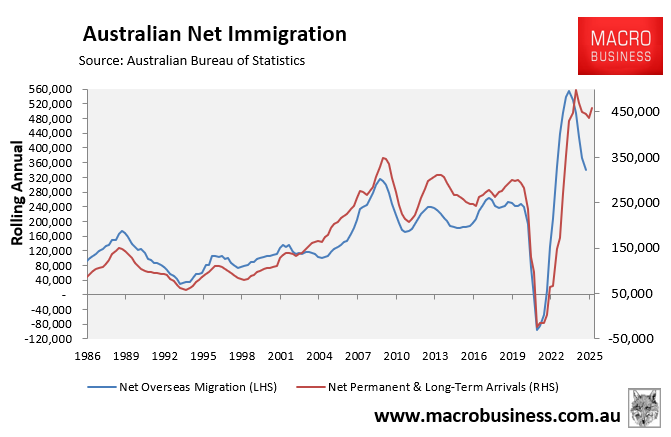
As you can see, despite the net arrivals numbers deviating from NOM, they have historically served as a valuable leading indicator for identifying turning points and determining whether NOM is increasing or decreasing.
The monthly net permanent and long-term arrivals data spiked to record levels in the first half of 2025, suggesting that NOM was increasing again. This was reported widely in the media, including by me at MacroBusiness.
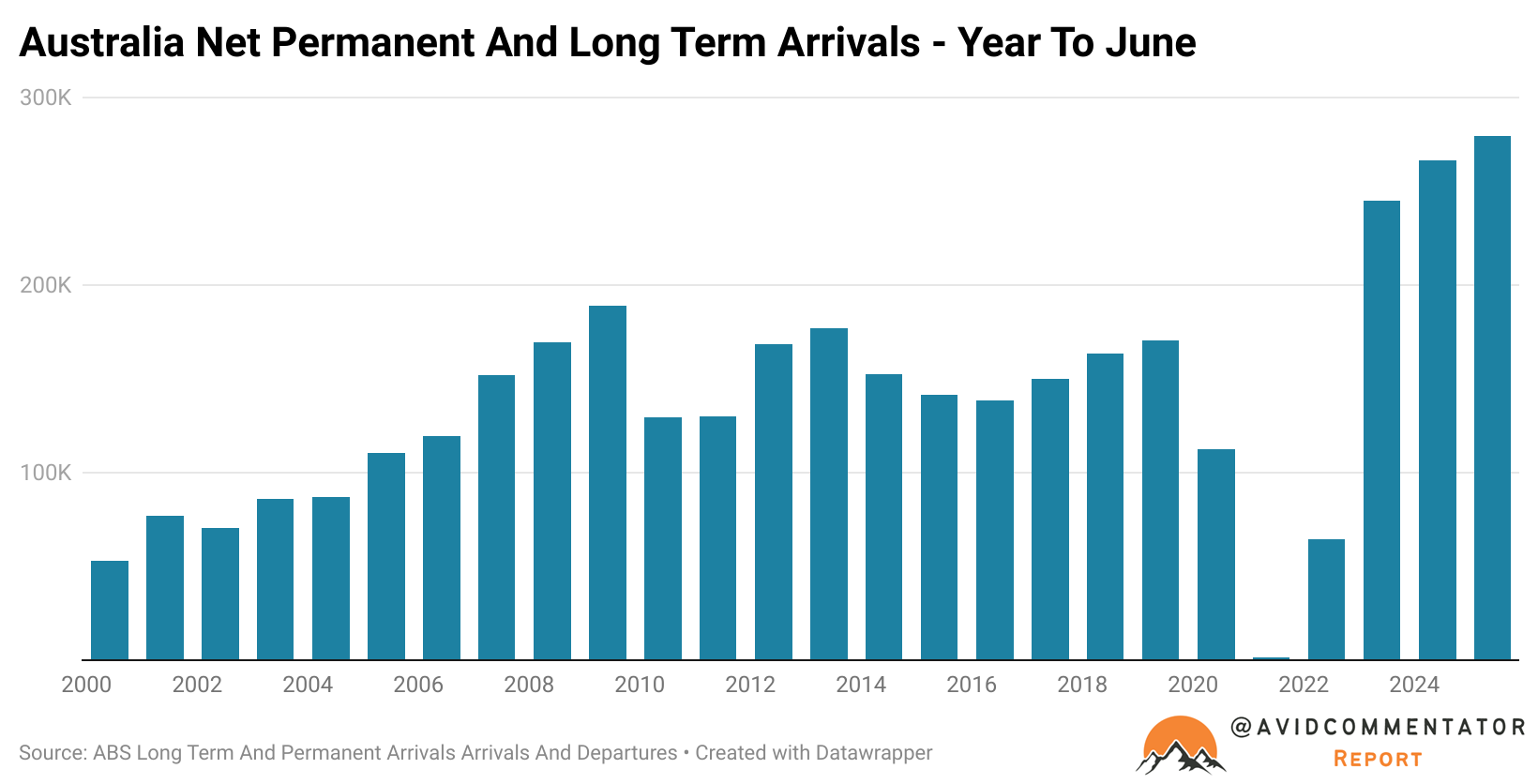
Cotality and SQM research also reported that rental vacancy rates have retightened over the first half, which suggests that rental demand via immigration may have increased.
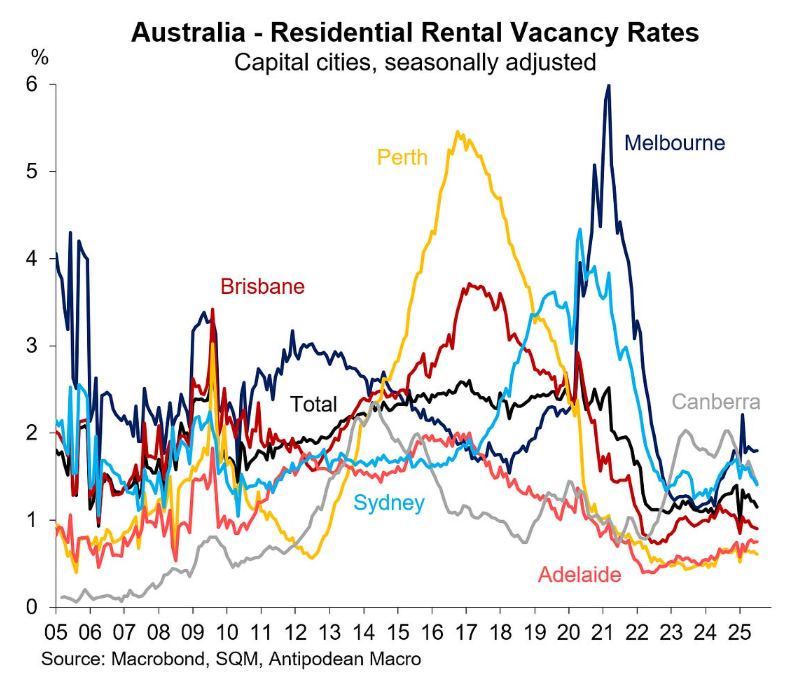
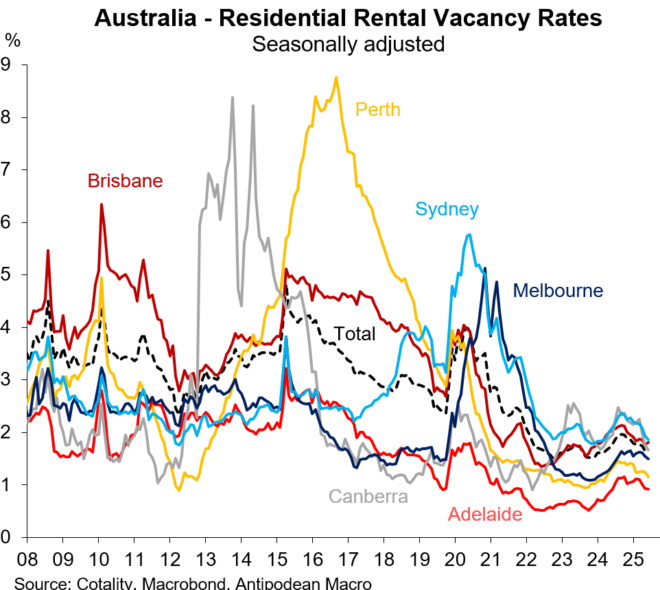
On Wednesday evening, the ABS sent an email to me requesting that I stop reporting the net permanent and long-term arrivals data as a migration measure. I assume this occurred because the ABS has been pressured by somebody in the Albanese government who doesn’t like that it is coping flak for failing to control immigration. You can read the ABS’ email and my response here. The ABS also reached out to other media outlets along similar lines.
The ABS also issued a media release warning the media that the net permanent and long-term arrivals series is a different data set from NOM.
In the media release, the ABS states [my emphasis]:
Permanent and Long-term movements come from traveller declarations and are not contingent on the traveller’s residency status prior to travel.
For example, this means a person who has been living in Australia for three years on a temporary visa, and travels overseas multiple times, can count as a long-term visitor arrival many times, even though they only migrated here once.
This is why OAD data should not be used to measure migration or population change, as it reflects self-declared traveller intentions rather than changes in residency status.
Curiously, the Australian Government’s official handbook from the Centre for Population, entitled Fundamentals of migration in Australia: Migration concepts and measurements, explicitly states that the net permanent and long-term series “can be used as a potential leading indicator for NOM”:
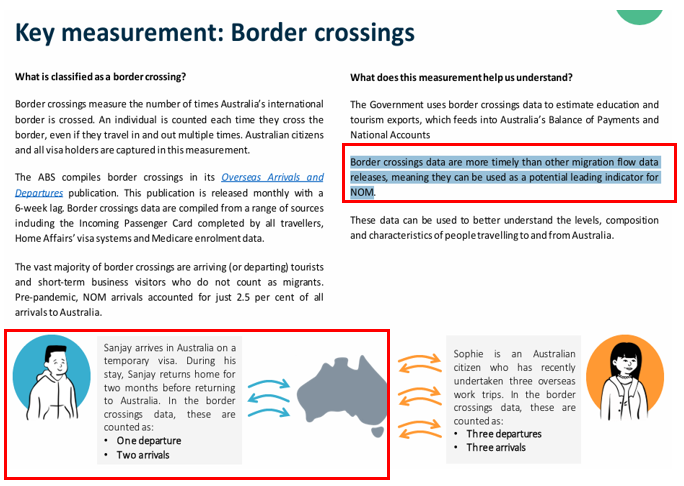
Source: Centre for Population (Australian Treasury)
As shown in the lower red box above, the Centre for Population noted that if a long-term temporary visa holder leaves and returns, the exit from and re-entry to Australia net out.
Therefore, net permanent and long-term arrivals are a reasonable, albeit imperfect, leading indicator for NOM.
The Centre for Population also explicitly lists arrivals and departures data as an “early indicator of future migration flows”:

Source: Centre for Population (Australian Treasury)
Why is it okay for the Centre for Population to utilise the monthly net permanent and long-term arrivals data as a leading indicator of migration, but not for the media to do likewise?
It appears that somebody within the government has ordered the ABS to go after media outlets for criticising the federal government for failing to control immigration.
The number of temporary migrants in Australia has blown out to a record 2.46 million under this government, up 750,000 from when Labor came to office in mid-2022.
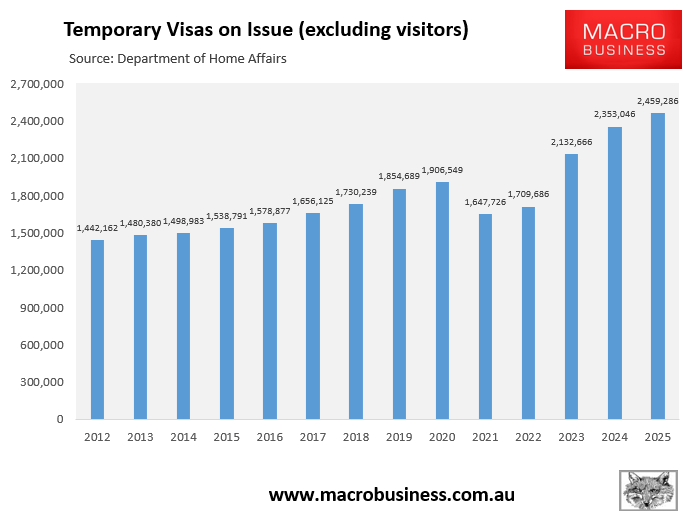
We also have record numbers of people on bridging visas (369,600), which former senior immigration department bureaucrat Abul Rizvi says are “the most important barometer of the health of the visa system”.
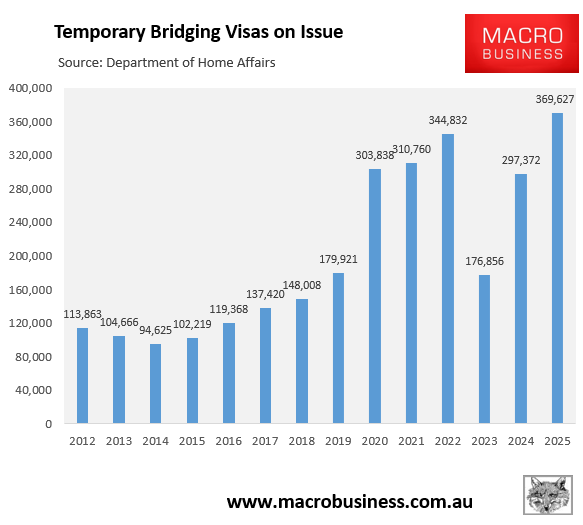
Rizvi also warned that there were nearly 100,000 rejected asylum seekers on bridging visas at the end of July and that Australia risked ending “up like North America & Europe” if asylum seeker numbers kept rising.

Sadly, the ABS, like most other public institutions in Australia, appears to have become politicised and intent on running interference for the government. I sincerely hope that I am wrong.
I discussed these issues in this morning’s interview with Ben Fordham at Radio 2GB:

